What are the coffee producing areas? Indonesian coffee brand introduction, Mantenin coffee bean characteristics.
At present, the coffee producing areas in the world are mainly distributed between 25 °south latitude and 25 °north latitude of the equator, and the producing area introduced today is Indonesia.
Indonesia is the full name of the Republic of Indonesia (English: Republic of Indonesia), referred to as Indonesia (Indonesia). It is a Southeast Asian country with Jakarta as its capital. With Papua New Guinea, East Timor and Malaysia and other countries. Indonesia, with a land area of 1913578.68 square kilometers and composed of about 17508 islands, is the largest archipelago country in the world, spanning Asia and Oceania, and a country with many volcanoes and earthquakes. The larger islands are Kalimantan, Sumatra, Irian, Sulawesi and Java.
With a population of 262 million, Indonesia is the fourth most populous country in the world. There are hundreds of ethnic groups, including 45% of the population of Java, 14% of the Sunda, 7.5% of the Madura and 7.5% of the Malay. There are more than 200 national languages, and the official language is Indonesian. About 87% of the population believes in Islam, making it the country with the largest Muslim population in the world.
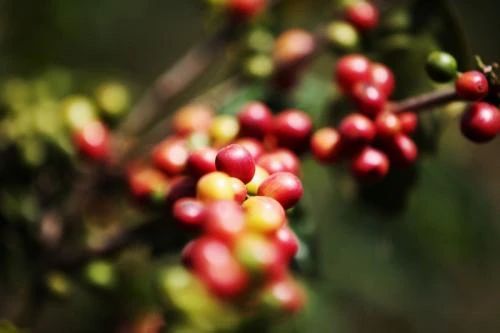
13Mel formed a powerful empire in Java in the 14th century and became a Dutch colony at the end of the 16th century. It was occupied by Japan in 1942. It became independent in 1945 and a republic was established in August 1950.
Indonesian coffee is famous for its mellow flavor and taste, and its acidity is very low. With caramel, dark chocolate-like sweetness and sweet, the Japanese have an almost obsessive obsession with this kind of coffee. Indonesian coffee is not only the major coffee producing country in Asia, but also the top coffee producing country in the world.
Planting origin
In 1696, Hendrik Tsvad Crohn (Hendrik Zwaardecroon), then governor of the Netherlands in Malabar, India, gave Arabica coffee seedlings as a gift to the governor of the Netherlands in Batavia (Batavia present-day Jakarta). This was the first time coffee was grown in Indonesia. This batch of bean seedlings came to an end because of the flood.
The governor of Malabar, India, sent the second batch of bean seedlings in 1699 and harvested coffee for the first time in 1701, ushering in a new era of Indonesian coffee. These coffee trees grow here and are domesticated into JAVA varieties.
In 1706, the first local coffee sample was exported to Amsterdam along with coffee trees. Seedlings grow and propagate in the Amsterdam Botanical Garden (Hortus). Yes, these seedlings are the origin of Arabica coffee in Brazil and the Caribbean.
In 1711 the Dutch East India Company (VOC) first shipped Indonesian coffee from Java to Europe.
In 1718, the Dutch transplanted coffee to the Mandailing High Land on the west side of Sumatra near the Indian Ocean, and later found that Lake Toba in North Sumatra was more suitable for the growth of Arabian coffee.
In 1876, all Arabica coffee trees below 1000 meters above sea level died as a result of insect pests. To solve this problem, the Dutch brought a free coffee (CoffeaLiberica), which is more resistant to leaf rust.
Java coffee reached a peak of 94400 tons in 1880-84. At that time, coffee played a more important role than sugar cane.
In the late 1880s, most coffee plantations were destroyed by insect diseases. the plague spread to parts of Java in central and eastern Java, and leaf rust destroyed most of the Dutch coffee variety system.
In 1888 Arabica coffee moved northward again to be planted near Lake Toba (Lake Toba).
Robusta was introduced to East Java in 1900 as a substitute for Arabica coffee.
The Indonesian Coffee and Cocoa Institute (ICCRI) was established in 1911.
Around 1915, Roberta coffee was introduced to small farmers near the Kerinci volcano.
In 1920 Robusta quickly spread throughout southern Sumatra.
In 1924 Arabica coffee moved northward again to the GAYO mountains of Lake Tawa (Lake Tawar) in Aceh province where it was grown by the local GAYO people.
Shortly after independence in the 1950s, Dutch-owned Java plantations were nationalized and managed by Perusahaan Terbatas Perkebunan Nusantara (PTPN).
Today, Indonesia's Robusta coffee accounts for about 85% of the total production, while Arabica accounts for 15%, while Robusta is grown in southern Sumatra and Arabica in northern Sumatra. At present, the coffee planting area in Indonesia is more than 1 million hectares, 90% of which are operated by small farmers.
There are three main types of coffee beans in Indonesia: Arabica coffee beans, Robusta coffee beans and Liberica coffee beans. Among them, there are more than 20 kinds of main varieties, such as Kaddura, Katim, Timor, Tippika, S288Magol S795, Sidi Karan (Sidikalong) and so on.
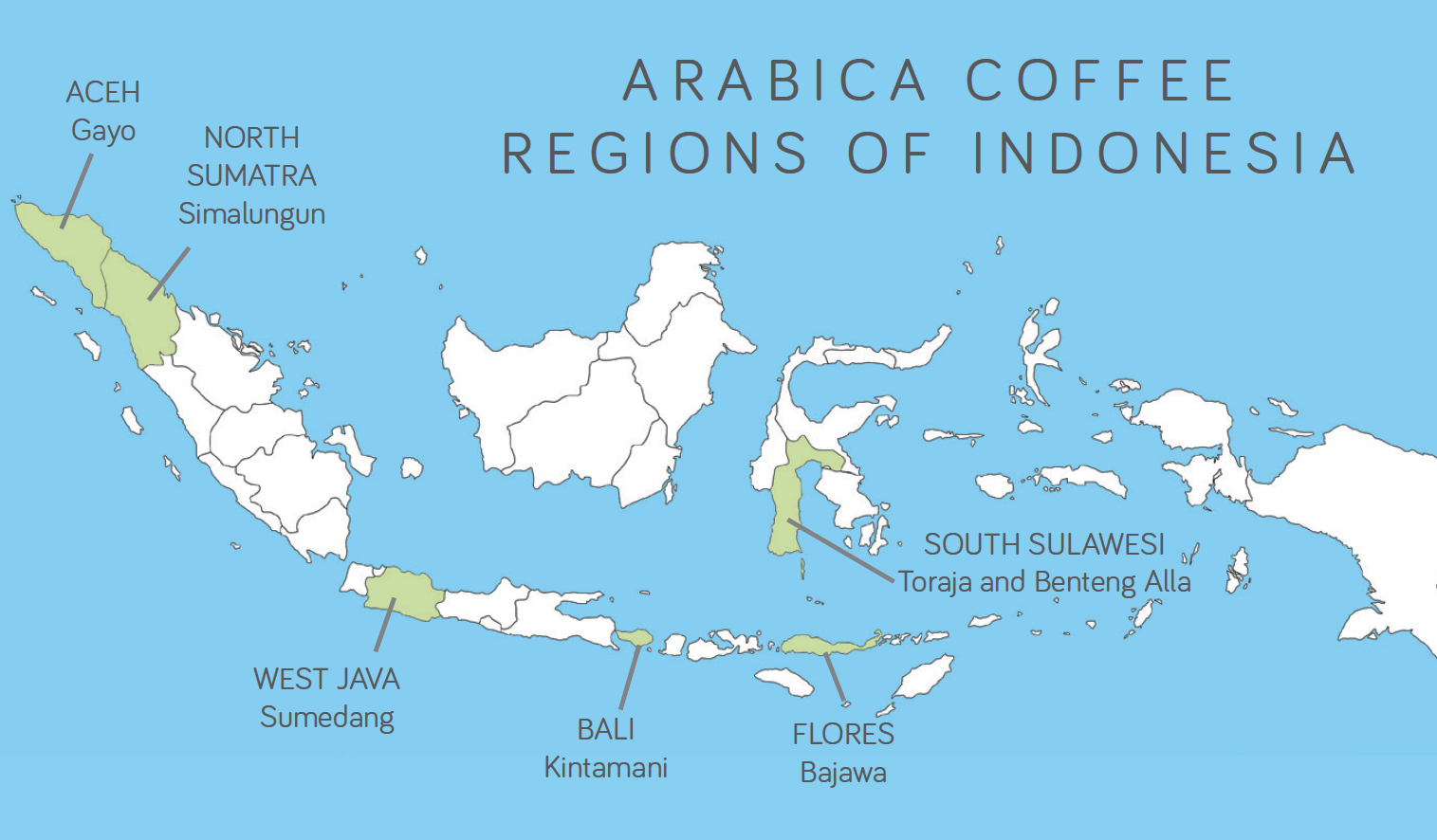
Wet planing method
The processing method of Indonesian coffee is called giling basah, and in other parts of the world it is called semi-washing / wet shell process. Once the coffee is picked, it is skimmed and dried briefly. Instead of drying the coffee to a moisture content of 11% or 12%, as in most other processes, the coffee is dried to a moisture content of 30-30% during a half-washing process. Then shell the coffee to peel off the parchment and expose the raw coffee beans underneath. Then dry the bare beans again until they are dry enough to store without decay. Half-washed coffee tends to have much lower acidity and more body than most coffees.
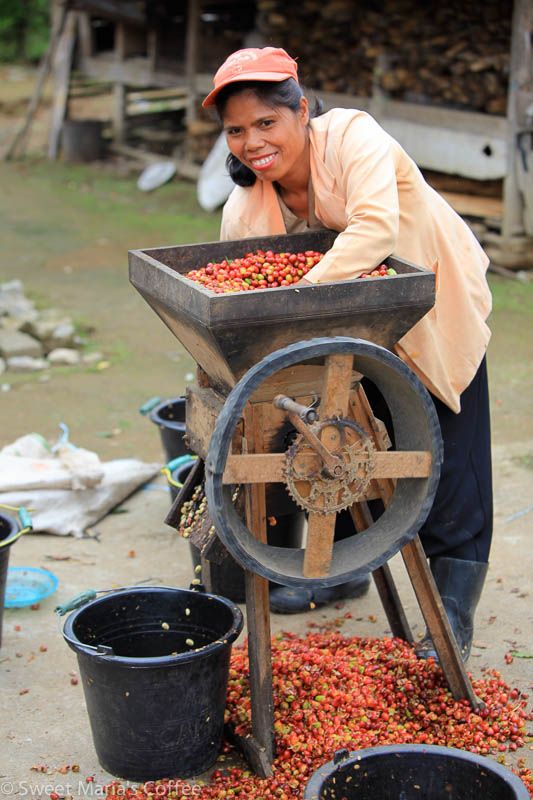
Indonesian coffee tends to have a dark and bold flavor, with outstanding dirt. The flavors produced by the semi-washing process include soil, mildew, spices, wood, tobacco and leather. They usually have a long-lasting effect and feel like unsweetened or dark chocolate. Sumatra is the most popular part of Indonesia today because it is famous for its dark roasting. Sumatra produces Mandheling and Ankola, the best-known and best-quality coffee in the world. It usually has a smoked or roasted taste that is very complicated. Qianjie found that people are often polarized to Indonesian coffee, and those who like it can't put it down, while those who don't like it stay away. When a friend comes to Qianjie to ask for a cup of coffee that is not sour, Qianjie will recommend Indonesian beans first.
Sumatra Mantenin coffee beans
When it comes to Sumatran coffee beans, it must be Mantenin coffee beans. The main production area of Mantenin coffee beans is located in the area of Lake dopa at the northern tip of Sumatra, Indonesia. The common mantenin coffee beans are gold mantenin coffee beans, Lindong mantenin coffee beans and old mantenin coffee beans.
The difference between these three mantenins is that Lin Dong Mantenin represents the most Mantenin flavor and has a strong herbal flavor. And Golden Manning is a selected grade of Mantenin, the size of beans are uniform and more than 18 mesh, manual screening more than 4 times, its taste is clean and bright, but the mellow feeling is also excellent. Old Manning has also said before that the use of different wet planing treatment will bring out a stronger flavor, which is not acceptable to ordinary people. So when a friend asks for a cup of coffee that is not sour and mellow, the front street coffee will be gold manning first.
Take [Qianjie Coffee PWN Gold Manning] as an example
Flavor description: nuts, chocolate, spices, herbs, caramel, gold mantenin tastes cleaner than Lindong mantenin, Mantenin's original herbal, earthy and woody flavors are almost gone, but caramel is more sweet and fruity is more bright and elegant.
Important Notice :
前街咖啡 FrontStreet Coffee has moved to new addredd:
FrontStreet Coffee Address: 315,Donghua East Road,GuangZhou
Tel:020 38364473
- Prev
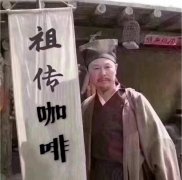
Is hand-made coffee metaphysical or scientific? Is the hand coffee brewing technique really that important?
When many friends first come into contact with coffee, they will feel that coffee is a metaphysics, thousands of kinds of coffee beans, some people can play tricks on a bean, strange brewing techniques, creating a different flavor experience, really let people call Xuan! Coffee metaphysics became popular as early as the era of surfing the Internet! It also creates a lot of interesting things, such as hand Chong must go.
- Next
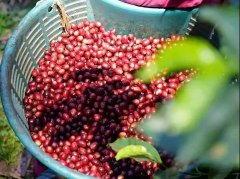
According to the characteristics of Honduran coffee beans, is Honduran Shirley barrel fermented coffee beans good?
Honduras, whose full name is the Republic of Honduras, is a mountainous country in Central America. Bordering Guatemala, El Salvador and Nicaragua, it lies between the Pacific Ocean and the Caribbean Sea, with a coastline. This used to be where the Indians lived. Columbus landed here in 1502 and named it Honduras (meaning abyss). It was colonized by Spain at the beginning of the 16th century. Proclamation on September 15, 1821
Related
- Beginners will see the "Coffee pull flower" guide!
- What is the difference between ice blog purified milk and ordinary milk coffee?
- Why is the Philippines the largest producer of crops in Liberia?
- For coffee extraction, should the fine powder be retained?
- How does extracted espresso fill pressed powder? How much strength does it take to press the powder?
- How to make jasmine cold extract coffee? Is the jasmine + latte good?
- Will this little toy really make the coffee taste better? How does Lily Drip affect coffee extraction?
- Will the action of slapping the filter cup also affect coffee extraction?
- What's the difference between powder-to-water ratio and powder-to-liquid ratio?
- What is the Ethiopian local species? What does it have to do with Heirloom native species?

